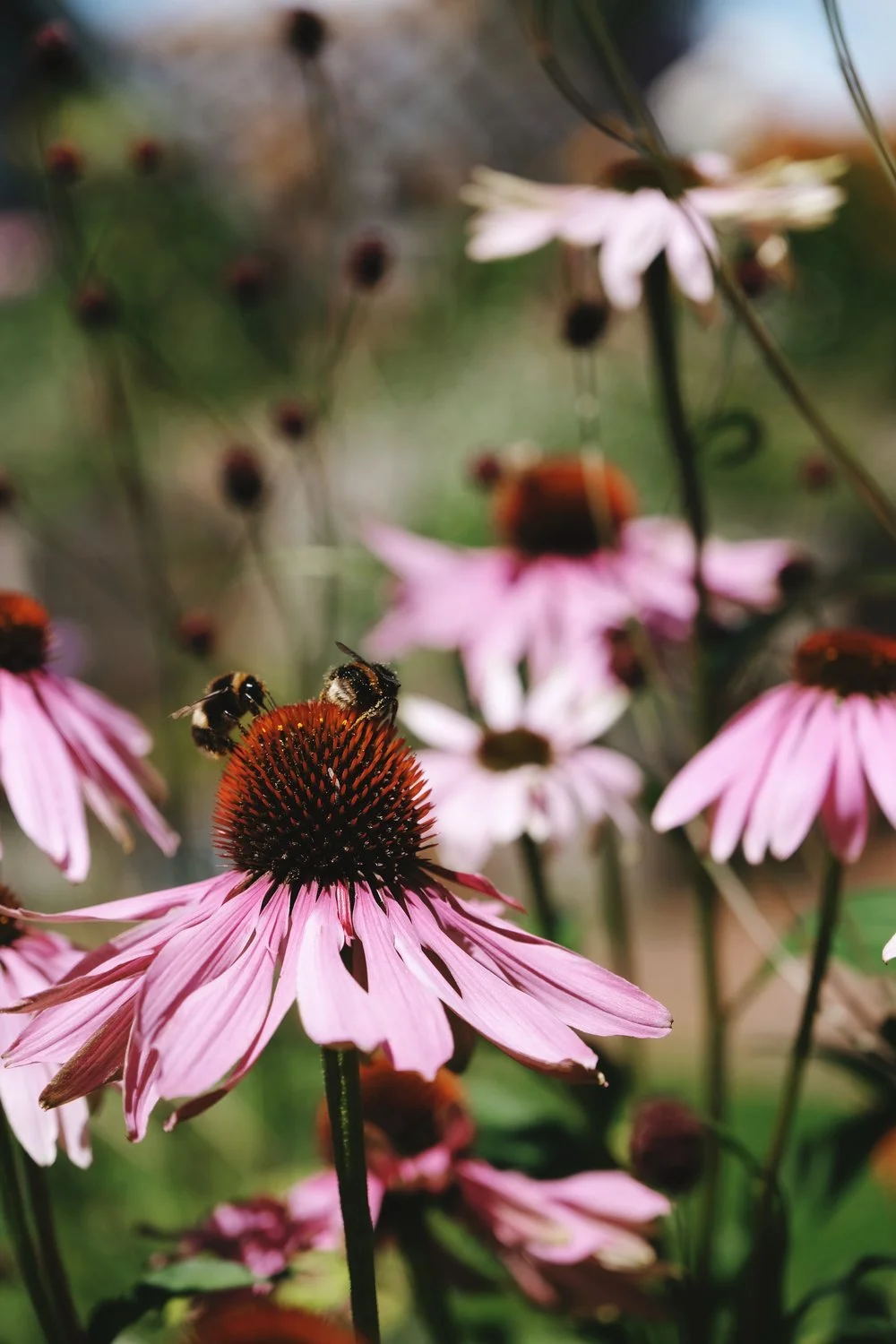A beginners guide to botanical plant names
/Before I started gardening, one of the biggest hurdles stopping me from getting going was wondering how I could possibly remember any plant names. For me, it was right up there with understanding business accounting. Practically impossible.
But like many things in this whole gardening ride, I was surprised by the fact that the common names of plants I started collecting stuck in my mind like drops of sap, underlining the fact that we can learn anything if we have an interest in it! The botanical names, however, were another level of mystery, and one that I initially, and naively, shoved aside as unnecessary. That was, until I went looking for Verbena bonariensis.
In the UK, if you want to find Verbena bonariensis you can walk into any garden centre, ask for ‘verbena’ and leave with exactly what you hoped for. I quickly discovered that going through the same process here in New Zealand got me marched to the bedding plants table and presented with the compact annual, garden verbena.
My initial battle to source Verbena bonariensis was due to two factors: the plant itself is scarce here; and its regional, common name in the Northern Hemisphere does not match up to the name used in New Zealand.
Learning my lesson, I locked in its botanical name for a local online search, instantly tracked down seed and was on my way, thus demonstrating to myself exactly why botanical names are relevant and important.
Verbena bonariensis - a mid to tall short lived perennial. Mostly NOT the verbena you will be shown if you enquire at aN NZ garden centre, as verbena is the common name for a low growing annual.
The Swedish botanist Carl Linnaeus developed the binomial (two names) system of naming plants in the 1700s. At the time, Latin was the language of science and the binomial system was also used in the study of animals. Botanical names have expanded over time to use both Latin and Greek-derived words.
While Latin can feel distinctly irrelevant to most of us now, as well as somewhat dismissive of regional language and the naming of plants from the lands they are native to, Latin does enable a unified format that allows plants to be identified, discussed and researched cohesively on a global scale.
Mid summer tops of Verbena bonariensis
In our own analysis here, we will start near the top of the botanical nomenclature system, with plant families. These can be fascinating to investigate, as we find scientific links between plant species we know and love.
Each family is then divided into genus, species, botanical variety (wild origin), cultivar (human origin) and hybrid. For example, Verbenaceae is a plant family that includes 32 genera (including our subject family, verbena) and 800 different species with resulting varieties, cultivars and hybrid examples.
Iris x hollandica ‘Blue Magic’ - Dutch Iris
The botanical name of a plant, in its simplest form, is made up of two parts. The first is the plant’s ‘genus’ (plural: genera). It’s useful to think of this as its ‘surname’. This should always be written with a capital first letter and italicised.
The second part is the ‘specific epithet’ (an epithet is a Latin adjective). This word applies to the plant’s defining characteristics within the genus. This should not have a capital letter but is always italicised.
The combination of these two words is called the ‘species name’ or ‘botanical name’. For example, you can consider Verbena bonariensis and Verbena x hybrida (the garden verbena I mentioned) to be on the same family tree but on different branches of it.
Often, within the species, there are plants that have naturally evolved to be different enough to require a new definition as a unique variety. While they are on the same large branch of the family tree, you could imagine them to be on their own little leafy stem, so to speak.
If this new trait has occurred naturally and continuously appears over time in its offspring, this emerging variety in the family will be indicated by the botanical name, followed by a non-italicised ‘var.’ and its new given name. Plants grown from this seed will produce ‘true to type’ to its parent plant. For instance, Verbena officinalis var. grandiflora. If the new traits in the plant have emerged as a result of cultivation helped along by humans, this is called a ̒cultivar’ (cultivated variety).
Cultivars can include an unusual form of a species found in the wild, collected and propagated further, an interesting plant that formed by chance in a garden or nursery, or a hybrid.
These days the botanical names for cultivars are simply displayed as the species name concluded with its given name, non-italicised with a capital, sitting between single quotation marks. For example, Verbena bonariensis ‘Lollipop’. While it’s not theoretically correct, the terms variety and cultivar are often used interchangeably.
Lastly, there is the hybrid, and this is where the botanical names get little more complicated.
Keeping it light, a hybrid is a result of crossing two different species or varieties that can both occur naturally or through human experimentation. The results include characteristics of both plants, and seeds saved from hybrids don’t result in plants ‘true to type’. Division or cuttings would be needed to grow another plant in its exact image.
Sometimes these plants are indicated by the parent species’ genus separated by an non-italicised ‘x’ followed by the new name for the resulting cross, which can often simply be ‘hybrida’ as seen with Verbena x hybrida. Other times, it might be the two parent species’ names separated by ‘x’. Confusingly, hybrids helped along by humans are also cultivars.
Deep breath!
Echinacea purpurea (I can’t remember the variety!)
The word echinacea is derived from the Greek meaning “‘spiny one” in reference to sea urchins. Purpurea means “reddish-purple” and refers to the classic lipstick tones of the common ray-shaped petals.
Rudbeckia fulgida var. deamii and Helenium ‘Waltraut’
As you explore botanical names you start to see that the specific epithet will often give clues about the plant, even if you haven’t seen it before. Sometimes it can be a Greek-inspired version of the person who introduced it into the nomenclature system. For example, our native grass Carex buchananii is named after early New Zealand botanist John Buchanan.
Other times, recognisable Latin can hint at the plant’s characteristics, such as alba indicating white, purpurea purple and rubra red.
And, as you become familiar with this system, you will soon recognise reoccurring specific epithets that you can relate to other plants you know. Like hastata suggesting spear-shaped, echinops being spikey and latifolius, broad-leaved.
You don’t need a science degree to grasp a basic knowledge of botanical names and knowing plants beyond their common names unlocks the potential of your future planting and sourcing.
EXAMPLE USING RUDBECKIA
FAMILY
Asteraceae
GENERA
Rudbeckia
SPECIES
As described by botanical plant name and indication
of variety or cultivar (20+ different species)
EXAMPLE
Rudbeckia fulgida var. deamii
EXAMPLE
Rudbeckia nitida ‘Herbstonne’
This is an updated feature that is appearing in my new book -
A Guided Discovery of Gardening (Koa Press).
Due out Spring 2023 in NZ/Aus and early 2024 in UK/USA.







